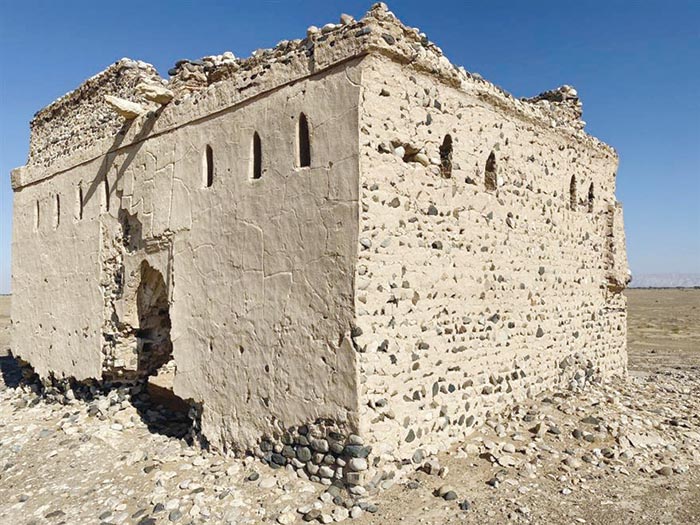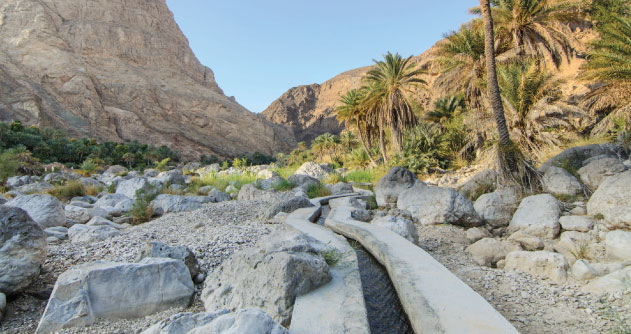

The Aflaj system is an ancient watering method that is deeply rooted in Oman’s heritage, with over 3000 aflaj – or irrigation systems – still in use today. Using gravity to transport water from springs, the fair management of these waterways plays an important role in communities around the country.
According to UNESCO, “The property includes five aflaj irrigation systems and is representative of some 3,000 such systems still in use in Oman. The origins of this system of irrigation may date back to AD 500, but archaeological evidence suggests that irrigation systems existed in this extremely arid area as early as 2500 BC.”
Using gravity, water is channelled from underground sources or springs to support agriculture and domestic use. Numerous watchtowers built to defend the water systems form part of the site reflecting the historic dependence of communities on the aflaj system. Threatened by falling level of the underground water table, the aflaj represents an exceptionally well-preserved form of land use.
Hydrologically, the Aflaj are integrated systems which collect water (groundwater, natural spring water or surface water), and deliver it through channels (underground or surface) for domestic and agricultural purposes. They can be broadly divided into three types of hydrological systems reflecting their type of water-source - Aini, Daoudi and Ghaili.
The Ministry of Agriculture, Fisheries and Water Resources recently signed a contract agreement for the design and setting up of a website and application for the Electronic Management System of Omani Aflaj “LMD”, in cooperation with the UNESCO Chair for Aflaj Studies at the University of Nizwa.The project is funded by the Agricultural and Fisheries Development Fund and Digital Imagination for Technology Company.
This project comes within the framework of water sector development projects in line with Oman Vision 2040.